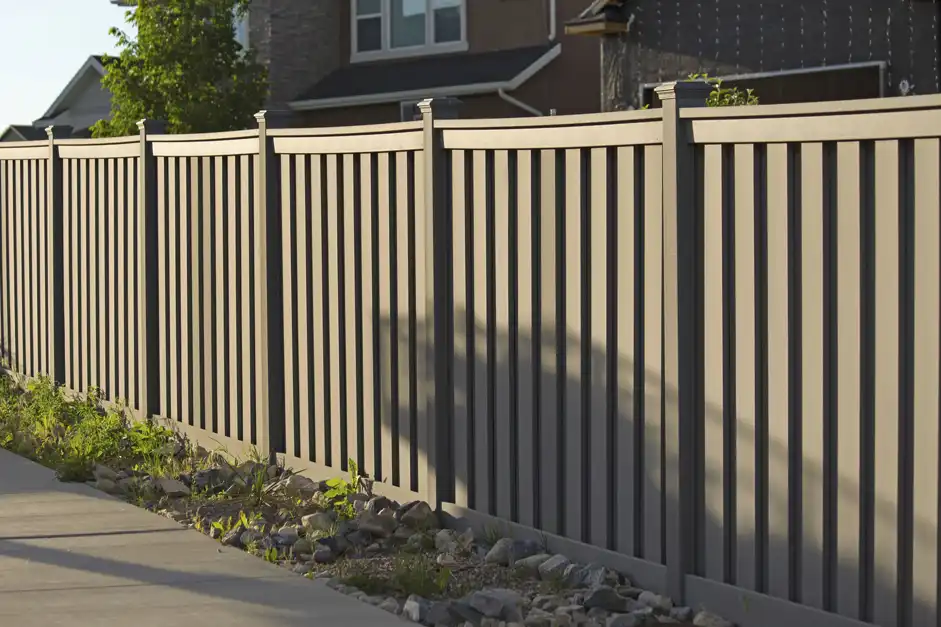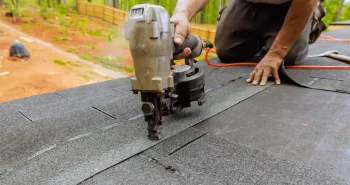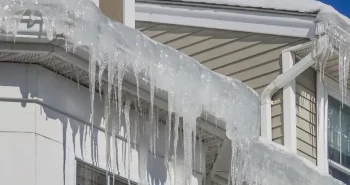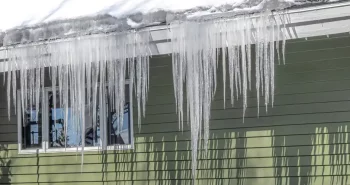Adding a fence to your home is a great way to enhance curb appeal while providing security and privacy, but it’s important to consider the pros and cons of composite fencing before making a decision. With so many fencing materials available, choosing the right one can feel overwhelming. While traditional options like wood, vinyl, and metal have been popular for years, composite fencing has emerged as a durable, eco-friendly, and low-maintenance alternative. Here’s what you need to know to decide if it’s the right choice for you.
What is Composite Fencing?
Composite fencing is a type of fencing that’s made from post-consumer recycled plastic and recycled wood fibers. It’s a synthetic material that uses up to 95% recycled materials, making it an excellent option for eco-conscious homeowners looking for environmentally friendly options. Composite fencing looks may look like wood or vinyl, but it comes in various colors and styles, allowing you to customize your outdoor space without too many upfront costs. But how do they differ from more traditional materials like plastic and wood?
Composite vs. Vinyl
Composite fencing’s appearance can sometimes rival vinyl, but it’s made from different materials and has unique pros and cons. Vinyl fencing is made entirely of synthetic plastic (PVC), whereas composite fencing blends recycled wood fibers and plastic. This gives composite a more natural, wood-like appearance than vinyl’s sleek, uniform look. However, both options can withstand harsh weather and resist rot and insects. Although vinyl is typically more affordable, composite fencing materials tend to last longer and are more resistant to warping and deterioration.
Composite vs. Wood
Traditional wood fencing is made from natural wood, while composite fencing incorporates recycled plastic and wood fibers. This makes composite fencing an eco-friendly option that reduces waste and deforestation while maintaining a wood-like appearance. Reclaimed wood may help decrease environmental impact, but it can also compromise durability if not processed correctly.
Depending on the type of wood, these fence options may be less durable and harder to maintain over the years. You’ll need to stain, seal, and paint them periodically to maintain their appearance, while composite fences may not need any care (depending on the environment and location). Although wood has more affordable initial costs, the ongoing maintenance, repairs, and care can make it more expensive over the years.
Benefits of Installing a Composite Fence
Composite materials are an up-and-coming type of fencing gaining traction among homeowners and business owners alike. With a unique composition and several benefits over traditional wood fences and vinyl, it’s easy to understand why this option is becoming so popular. Some of the most notable advantages include:
Easy Installation
Composite fencing is designed for convenience. Many composite fence panels are available in pre-assembled sections, making installation faster and easier than traditional wood fencing, which requires cutting, measuring, and assembling each board. With interlocking systems and lightweight materials, composite fences can be installed with minimal effort, saving homeowners time and money on labor costs. Although composite fences may be less complicated to erect, the installation process is still best left to the professionals.
Environmentally Friendly
One of the most significant benefits of composite fencing is its eco-friendly nature. Since it’s made from recycled wood fibers and plastic, composite fencing helps reduce landfill waste and minimizes the demand for new lumber. This is a sustainable option for homeowners looking to reduce their carbon footprint that still provides durability and beauty. If you want to make an even more significant impact, you can also choose composite decking materials to extend your outdoor liveable space.
Longevity
Composite fencing is built to last. Composite materials are engineered to withstand the elements, unlike wood, which can rot, warp, or suffer from termite infestations. Wood fences tend to last between 15 to 20 years. Vinyl is more durable but still susceptible to damage and usually lasts 20 to 30 years. A high-quality composite fence can last 30-50 years or more, making it a worthwhile long-term investment. With a range of composite fencing options (i.e., privacy fence, aesthetic fencing, and more), you can enjoy an outdoor oasis regardless of your goals.
Durability
Composite fences are resistant to moisture, rot, and insects, making them one of the most durable fences available. Composite panels also perform exceptionally well in extreme weather conditions, regardless of intense heat and humidity, heavy rain, or freezing temperatures with snow. Although other fence types can also withstand certain degrees of environmental stress, they tend to deteriorate or become damaged more quickly.
Aesthetically Pleasing
Another benefit that composite fences offer is diverse aesthetics. When installing a new fence, you can choose from a variety of different styles and colors, some of which are even made to mimic the natural grain and color variations of real wood. While you shouldn’t necessarily paint composite fencing, the variety of shades and styles allow you to match the style of your exterior home design without having to worry about long-term maintenance.
Low-maintenance
Homeowners who install composite fencing can enjoy a nearly maintenance-free solution. You may need to clean the composite boards every once in a while with soap and water to keep them looking their best, but that’s the extent of maintenance. This makes them a great option for busy homeowners who prefer to spend their free time doing other activities.
Disadvantages of Composite Fencing
There are also some disadvantages to choosing composite fencing. Of course, there are disadvantages to all types of materials, but they’re important to know to help ensure you make the best choice for your home or business. Some of the most notable cons of composite fences include the following:
Cost
The biggest drawback of composite fencing is its higher upfront cost than wood and vinyl fences. Since composite materials are engineered for durability and longevity, they tend to be more expensive initially. However, they can save money in the long run because they require little maintenance and last longer than traditional fencing. Although prices will vary based on the company you work with, here’s an average cost comparison.
Composite fencing costs between $25 and $55 per linear foot.
Wood fencing costs $15 to $35 per linear foot.
Vinyl fencing costs $20 to $40 per linear foot.
Aluminum and steel fencing costs $30 to $80 per linear foot.
Wrought iron costs $50 to $100 per linear foot.
These costs will also vary depending on the type of fence style you choose (i.e., picket fence, garden fencing, privacy fencing). They may also be higher based on the average installation process of companies in your area. Always check with prospective fence companies to ensure you understand the associated costs of installing a fence.
Durability
While composite fencing is generally durable, it’s not indestructible. Heavy impact, such as from fallen branches or vehicles, can cause cracks or dents that may be difficult to repair. However, it’s important to remember that composite fence posts and panels are still more durable than many other materials, except for certain types of metal and wrought iron.
Weight
Composite fencing panels are heavier than some other materials, which can make them more challenging to transport and install. The added weight means that strong, well-supported posts are essential for proper installation. This can sometimes increase labor costs or require additional structural support. It’s important to understand, however, that this weight helps contribute to fence durability. So, as long as a team of professionals takes care of the installation process, you shouldn’t be worried about the general weight of the fence.
Fading
Finally, composite fence panels can expand and contract with temperature changes. Higher temperature tends to cause some expansion, while colder temperatures can lead to contraction. However, if the composite fence boards were installed correctly, temperature fluctuations shouldn’t cause damage like in a wooden fence. Compared to vinyl and wood, a composite fence still stands as the winner when comparing long-term aesthetic results.
To ensure you’re getting the most out of your residential or commercial fence, partner with the professionals at First Star Exteriors. First Star Exteriors installs commercial fences around Arkansas. From oil and gas fields to community swimming pools, storage unit facilities, sports venues, and factories, First Star Exteriors has done it all. Our business customers count on us to provide security and peace of mind on their property. Our team of skilled contractors is also available to help you find the right type of fencing material and style for your residential property, regardless of whether that’s a vinyl fence or a composite fence. To learn more about our fence installation services, contact us today.





